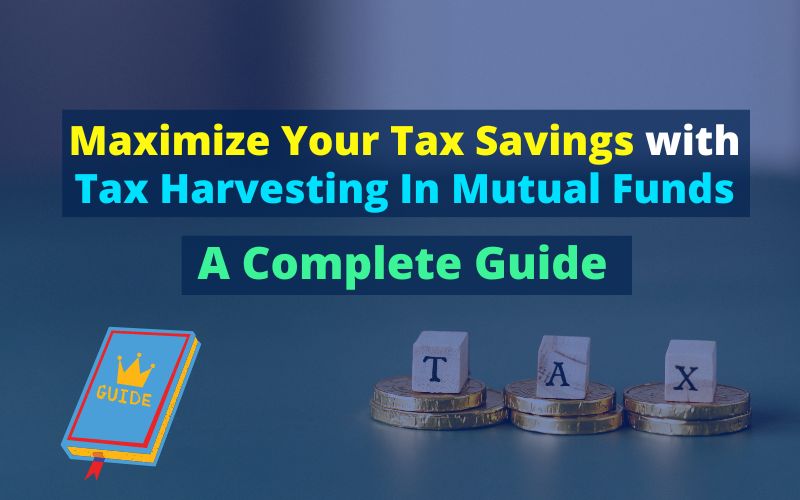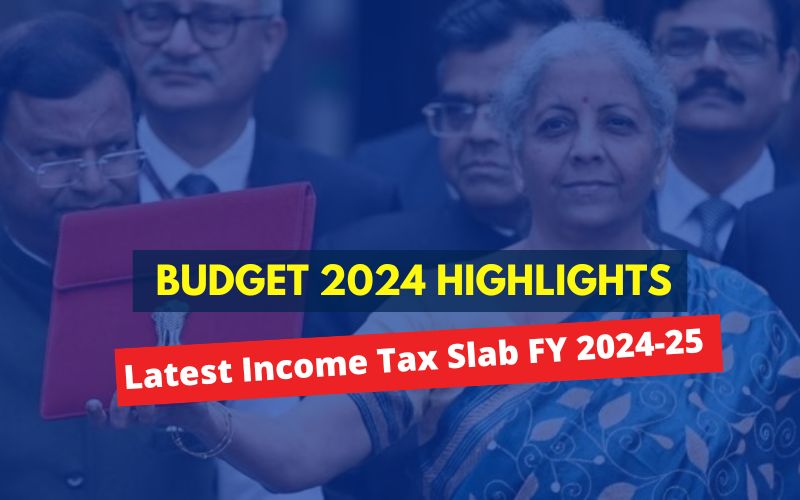The NPS (National Pension System) is a voluntary, defined contribution (the contribution rule is already defined) retirement savings scheme launched by the Government of India in 2004. NPS aims to provide retirement benefits to Indian citizens who subscribe to it. The NPS is regulated by Pension Fund Regulatory and Development Authority (PFRDA) and managed by PFRDA registered Pension Fund Managers and is open to a subscription to all Indian citizens between the ages of 18 and 65.
The NPS offers significant tax benefits to its subscribers, which makes it an attractive investment option for those looking to save for retirement systematically while also reducing their tax liability. In this article, we will discuss the NPS tax benefit in detail.

Table of Contents
NPS Tax Benefit 2023 under the old tax regime – (Tier 1)
If you have done your calculation and know the old regime is more beneficial than the new regime, then the old taxation rules concerning NPS will continue as earlier. Let’s understand in depth about NPS.
Types of NPS Accounts
An investor can make two types of contributions in the NPS – Tier 1 and Tier 2.
🔹Tier-1 contributions are mandatory to the subscribers and are locked in until the investor reaches the age of 60.
🔹Tier-2 contributions are optional and can withdraw at any time. NPS Tier 2 can be enabled only if you have a tier 1 account. Government employees can also avail of NPS tier 2 tax benefits under sections 80C and 10(10D) of the Income Tax Act, 1961.
What is the NPS tax benefit?
The NPS tax benefit is the tax deduction that investors can avail of under Section 80CCD of the Income Tax Act. Let’s understand Section 80CCD better:
🔹Section 80CCD(1): Self-contribution under this section allows for tax deductions of up to Rs. 1.5 lakh per annum for investments made in the NPS. The maximum deduction under this section is 10% of the investor’s salary (for salaried individuals) or 20% of the investor’s gross income (for self-employed individuals).
🔹Section 80CCD(1B): Self-contribution under this section allows for the additional benefit of Rs. 50,000 over and above the section 80C limit of Rs. 1.5 lakhs.
Thus, a total deduction of up to Rs. 2 lakhs can be claimed by an individual in a financial year for contributions made to the NPS.
🔹Section 80CCD(2): Apart from individual investors, the NPS also offers corporate tax benefits. Corporates can make contributions to the NPS on behalf of their employees and avail of tax deductions under Section 80CCD(2) of the Income Tax Act. The maximum deduction NPS subscribers can avail of under this section is 10% of the employee’s salary. For government employees, the cap is at 14% of their salary, while privately-employed individuals can claim up to 10% of their salary (basic + dearness allowance) under this section.
Note:
- Section 80CCD(1) and Section 80CCD(2) are part of Section 80C.
- If your total employer contribution under Sec.80CCD(2) is more than Rs.7,50,000 a year along with EPF and Superannuation, then such exceeded contribution and the return from the exceeded contribution will be taxable income in the hands of the employee.
Who can avail of the NPS tax benefit?
Section 80CCD(1): Salaried & self employed
Section 80CCD(1B): Salaried & self employed
Section 80CCD(2): Salaried
- 🔹For Private employees: Individuals can claim up to 10% of their salary (basic + dearness allowance).
- 🔹For Government employees: Individuals can claim up to 14% of their salary.
How to Invest in NPS?
You can use any portal listed below to open an NPS account online.
Note:
- The name you will fill in the form should match your PAN & the address should match your address proof, and the exact address needs to be updated with the bank record. Otherwise, the application will get rejected, and you may have to send the manual form.
- Before starting the registration, be ready with the following:
- 🔹Photo of your signature in black ink with white background
- 🔹Your passport-size photo
- 🔹Cheque photo
Also, at the time of registration, it will ask for an initial investment- You can proceed with Rs. 500, and once the account is active, make the balance investment.
Other Tax Benefits Under National Pension Scheme
Apart from the annual tax deductions that investors can claim under Section 80CCD (1)and Section 80CCD (1B), investors can claim a few additional NPS deduction benefits in some cases. Here are the other NPS tax-saving benefits:
On Partial Withdrawal
- 🔹An investor in NPS with at least 3 years can withdraw up to 25% of the corpus from the NPS Tier I account for specific purposes such as medical expenses, children’s higher education, marriage, etc. This withdrawal is exempt from tax.
- 🔹Partial withdrawal can be availed a maximum of three times with the condition that the subscriber will receive a maximum of 25% of their contributions made between two partial withdrawals.
On Returns
Returns from NPS Tier I account are not taxable until maturity. It works similarly to a mutual fund; the taxation will come into the picture once you withdraw. However, NPS subscribers can make the withdrawal completely tax-free upon maturity. Let’s understand how it works upon maturity.
On Maturity
- Tax benefit on withdrawal of 40% of the corpus
- Upon attaining the age of 60, an investor can withdraw up to 60% of the corpus; however, up to the withdrawal of 40% is entirely tax-free, but if you withdraw more than 40%, the withdrawal may be taxed as per the income tax rule (it is still not clear if is the entire withdrawal or excess of 40%). An investor can always choose to withdraw only 40% of the corpus to make it completely tax-free in the hands of the investor.
- Tax benefit on Annuity purchase
- The amount invested in purchasing the annuity plan is fully exempt from tax. However, annuity income will be subject to income tax.
- Example: Once an investor turns 60, up to 60% of the corpus can be withdrawn in a lump sum. The remaining 40% must utilize to purchase an annuity plan. Both of these are exempt from tax. For instance, if an investor has a total corpus of Rs. 25 lakhs at 60, then up to Rs. 10 lakhs (40% of 25 lakhs)can be withdrawn entirely tax-free. The remaining Rs. 15 lakhs an investor can use to buy an annuity plan to receive a retirement pension.
- The amount invested in purchasing the annuity plan is fully exempt from tax. However, annuity income will be subject to income tax.
Stages of NPS tax benefits
The NPS offers tax benefits in three stages – contribution, accumulation, and withdrawal.
Contribution stage:
Investors can avail of tax deductions for contributions made to their NPS account under Section 80CCD(1) of the Income Tax Act. The maximum deduction under this section is 10% of the investor’s salary (for salaried individuals) or 20% of the investor’s gross income (for self-employed individuals). Rs. 1.5 lakh per annum.
Accumulation stage: The NPS allows investors to invest in asset classes such as equities, bonds, and government securities. The returns on these investments are tax-free. Additionally, investors do not have to pay any tax on the interest earned on their NPS account balance; this makes the NPS a tax-efficient investment option.
Withdrawal stage:
When the investor reaches the age of 60, they can withdraw up to 60% of their NPS corpus tax-free. The remaining 40% of the corpus must utilize to purchase an annuity. The annuity income is taxable as per the investor’s tax slab.
Conclusion
The NPS offers tax benefits at every stage of the investment cycle. Investors can avail of tax deductions for contributions made to their NPS account, the returns on their investments are tax-free, and they can withdraw a portion of their corpus tax-free. Corporates can also avail of tax benefits by making contributions to the NPS on behalf of their employees. The NPS is a good investment option for individuals looking to save for their retirement while also availing of tax benefits.
Important Articles related to Personal Finance
- Income Tax New Regime Or Old Regime: For Salaried Employees
- Money management tips for beginners
- Tax Planning For Salaried Employees
- Investment Planning For Salaried Employees
- Mutual Fund KYC Online Registration
- How To Invest In Direct Mutual Funds?
- How To Start SIP Investment In Mutual Funds?
- 5 Mutual Fund Types: Learn To Choose The Right Fund For You
Important Calculators
Frequently Asked Questions
✓ What is NPS?
The NPS (National Pension System) is a voluntary, defined contribution (the contribution rule is already defined) retirement savings scheme launched by the Government of India in 2004. NPS aims to provide retirement benefits to Indian citizens who subscribe to it.
✓ Who can invest in NPS?
Section 80CCD(1): Salaried & self employed
Section 80CCD(1B): Salaried & self employed
Section 80CCD(2): Salaried
🔹For Private employees: Individuals can claim up to 10% of their salary (basic + dearness allowance).
🔹For Government employees: Individuals can claim up to 14% of their salary.









